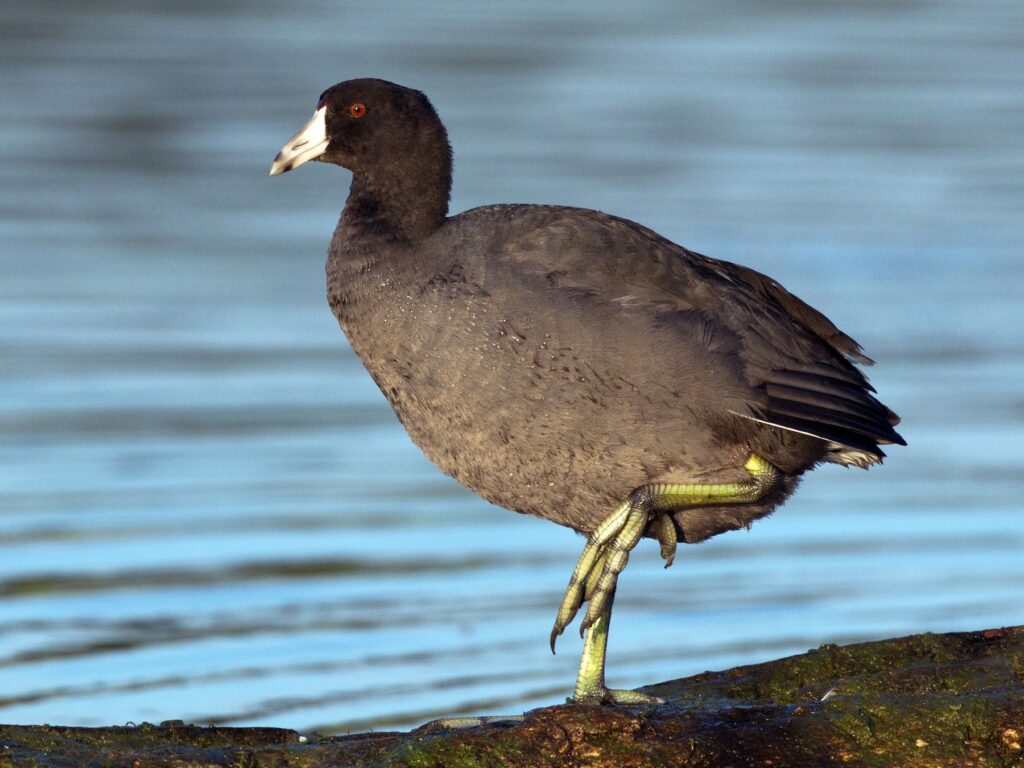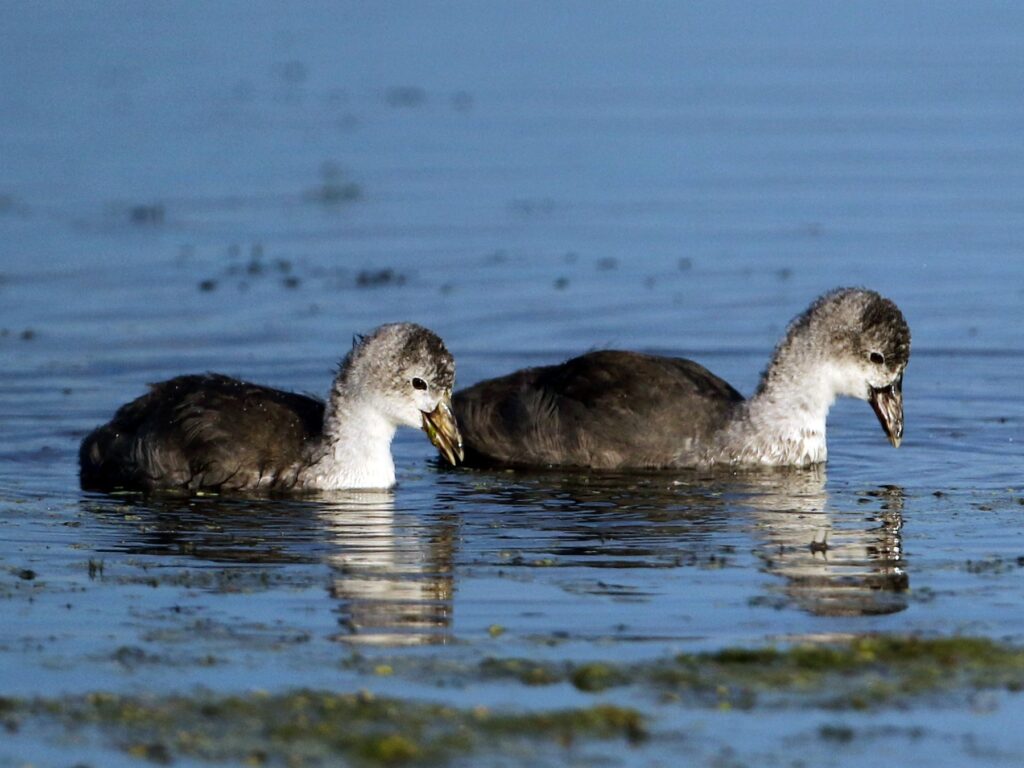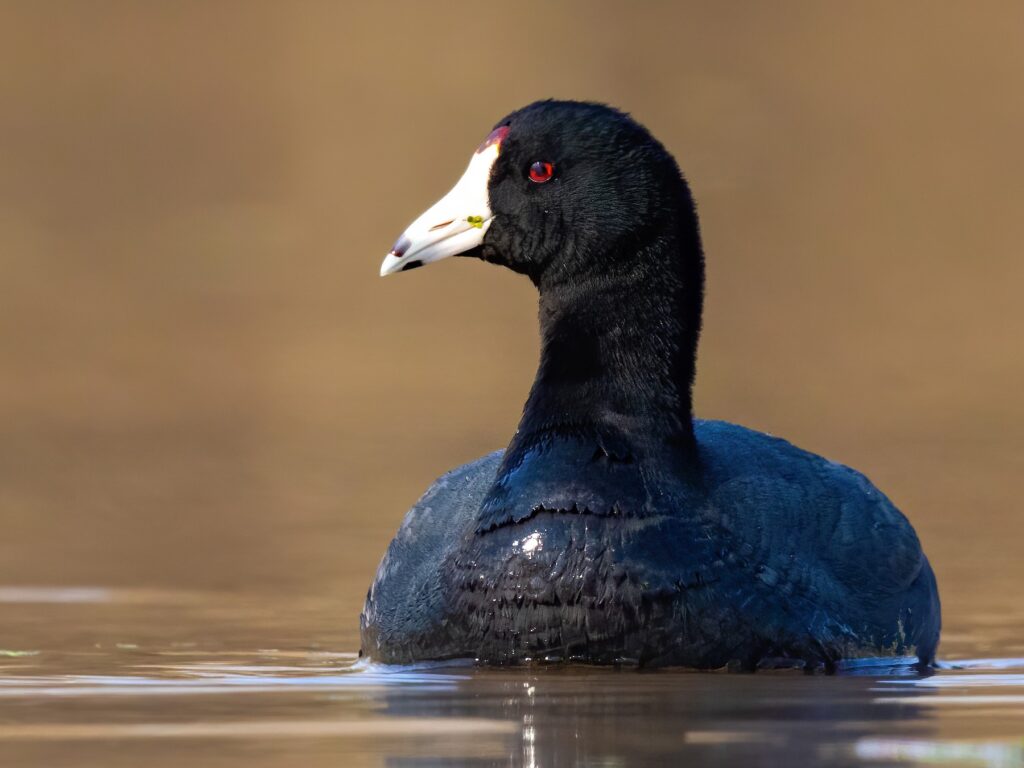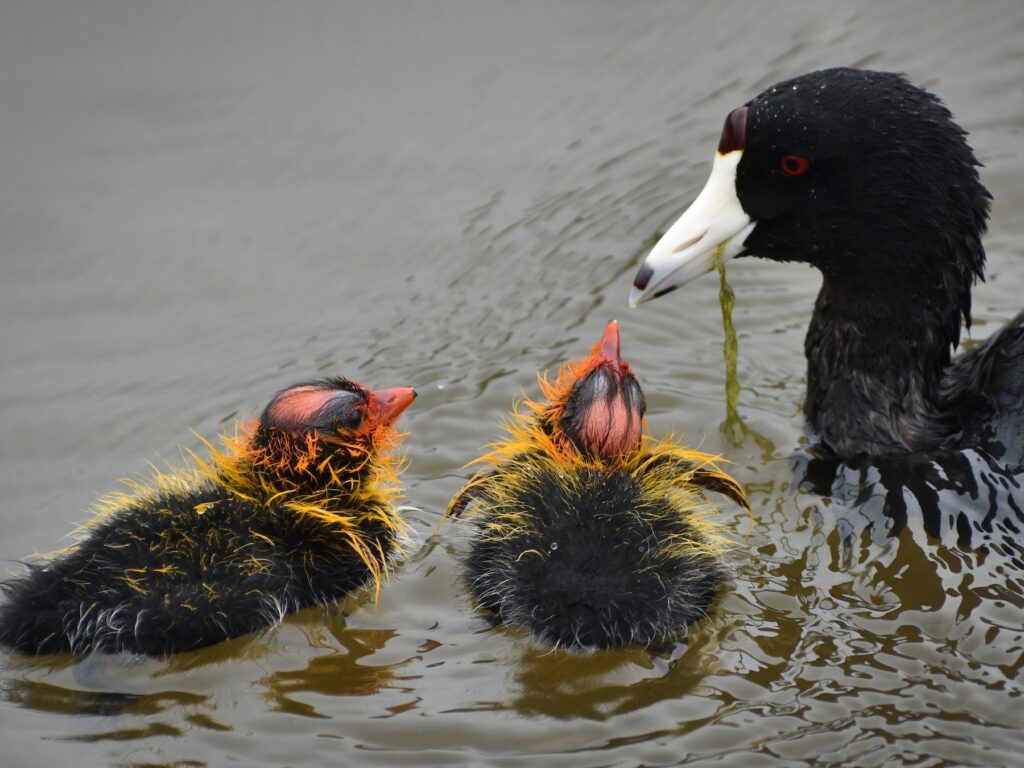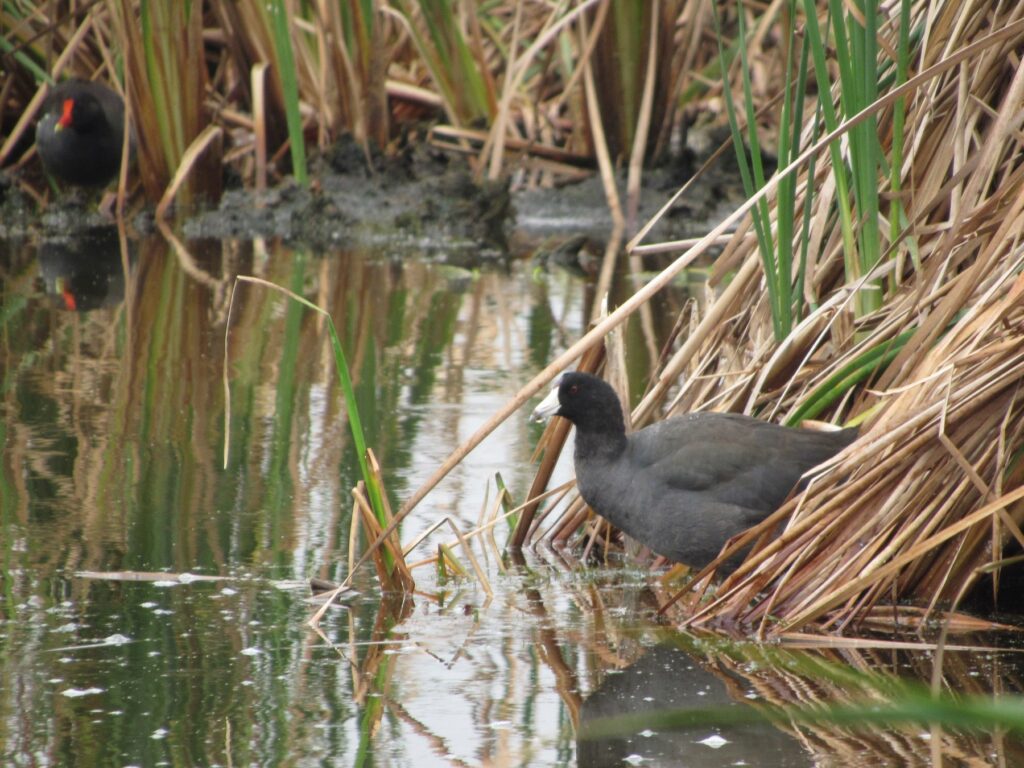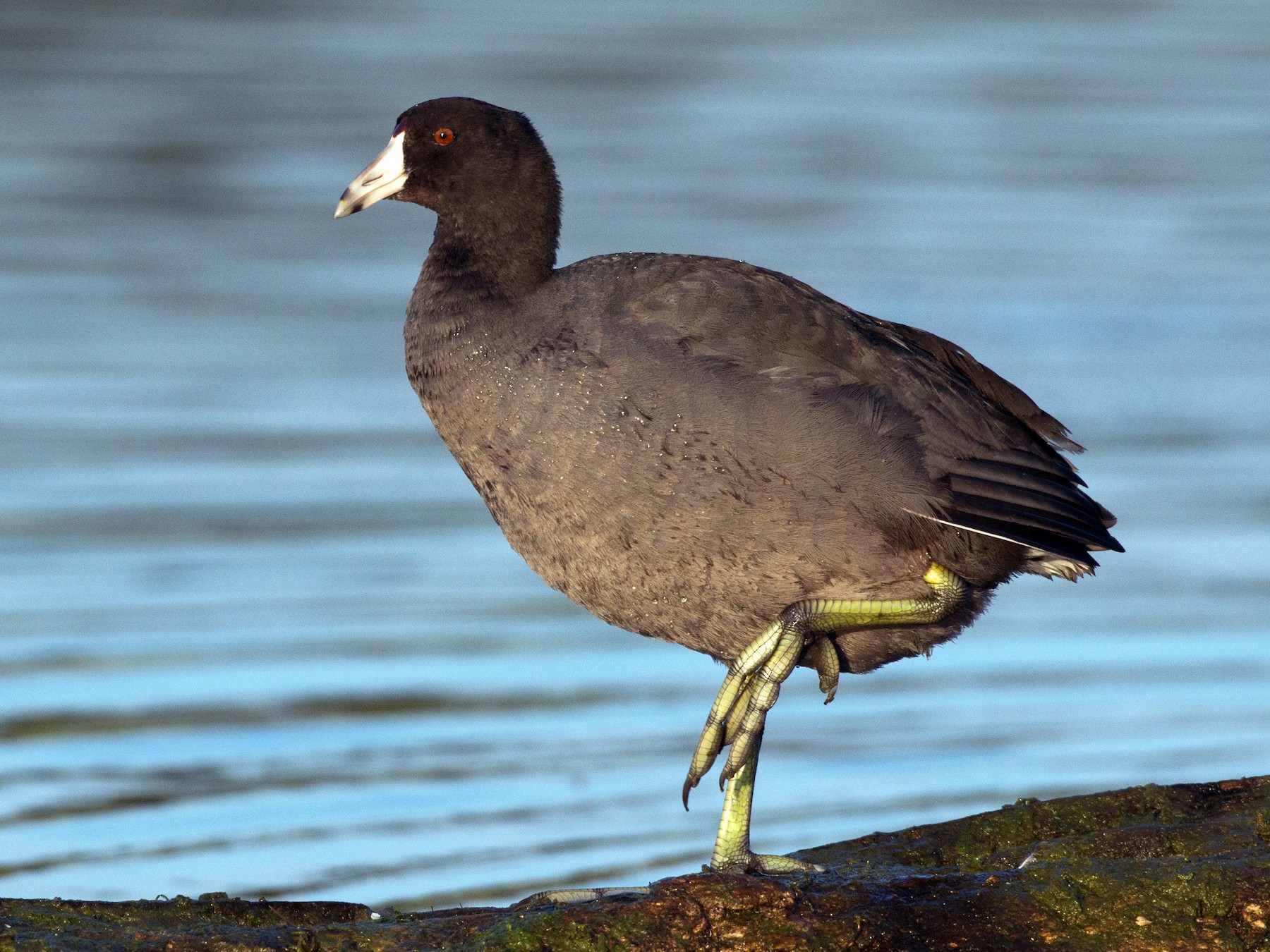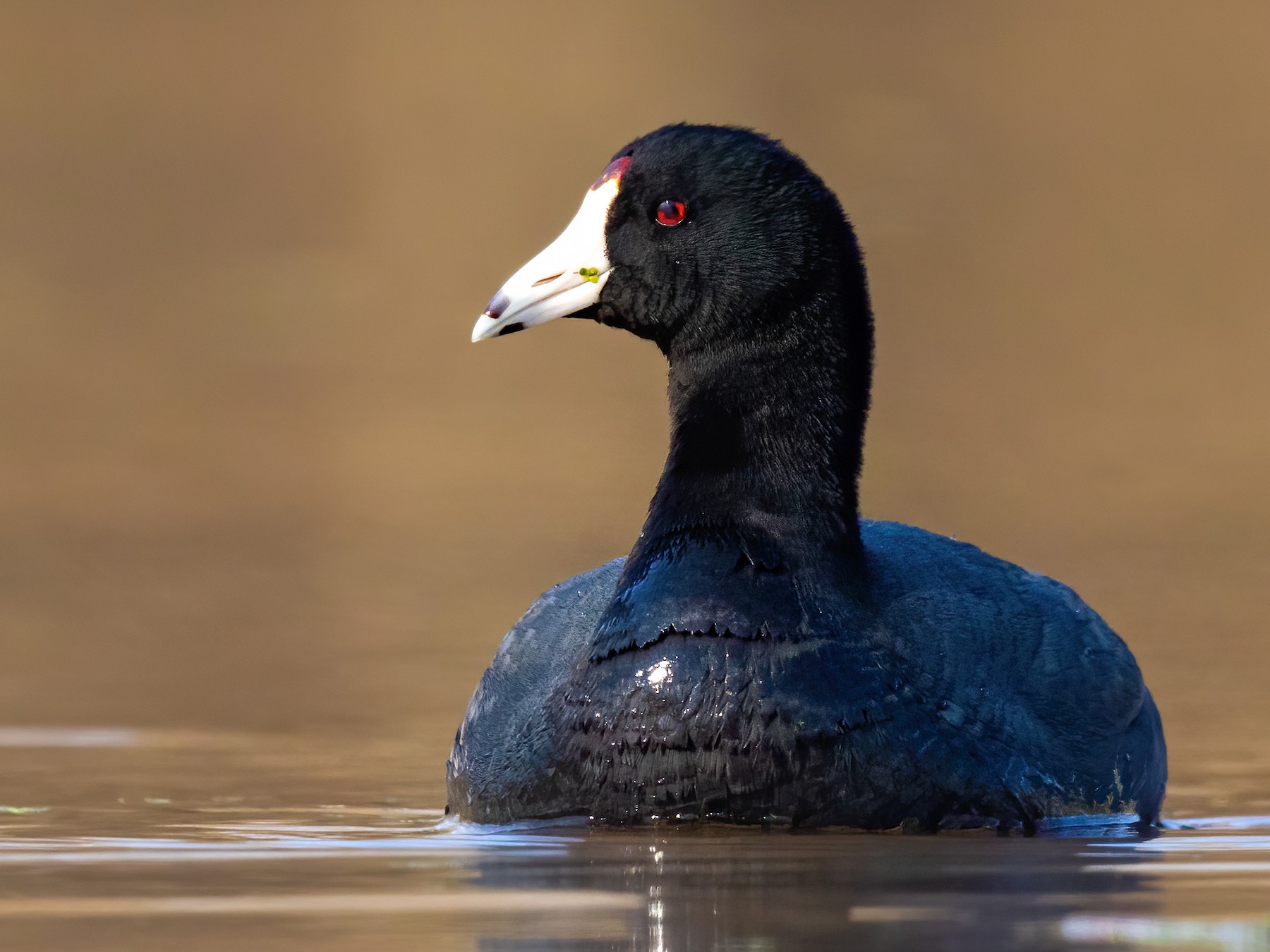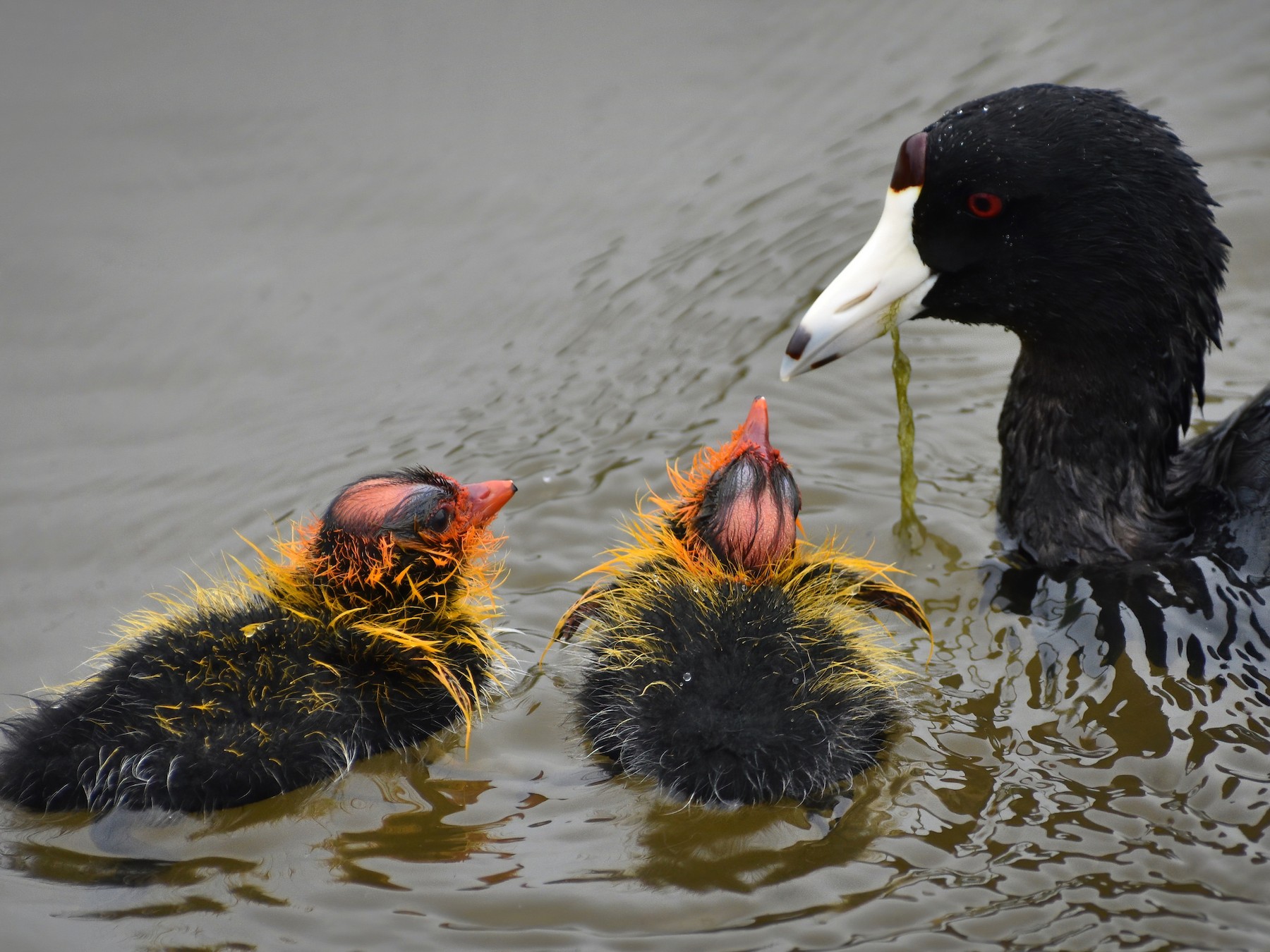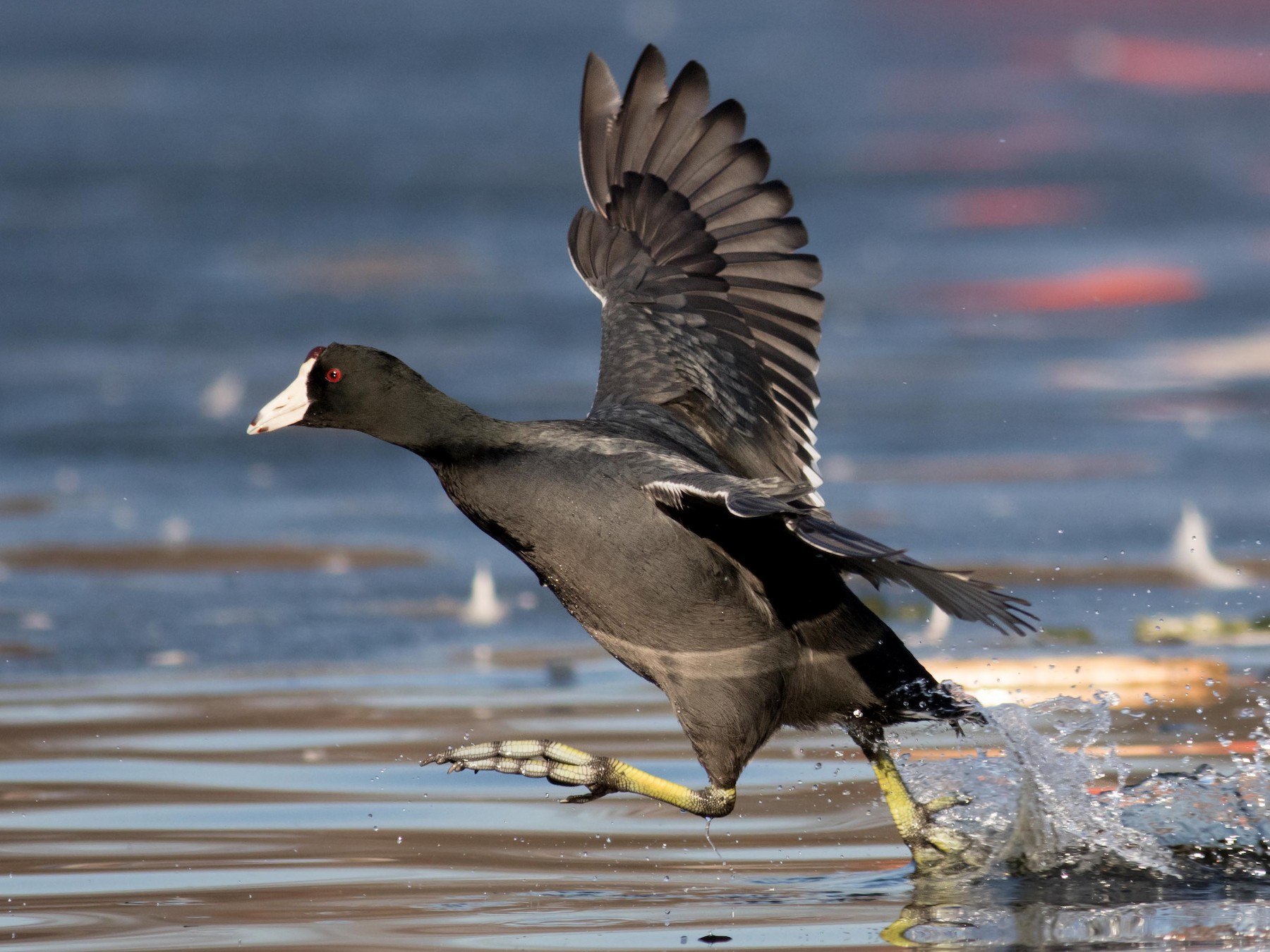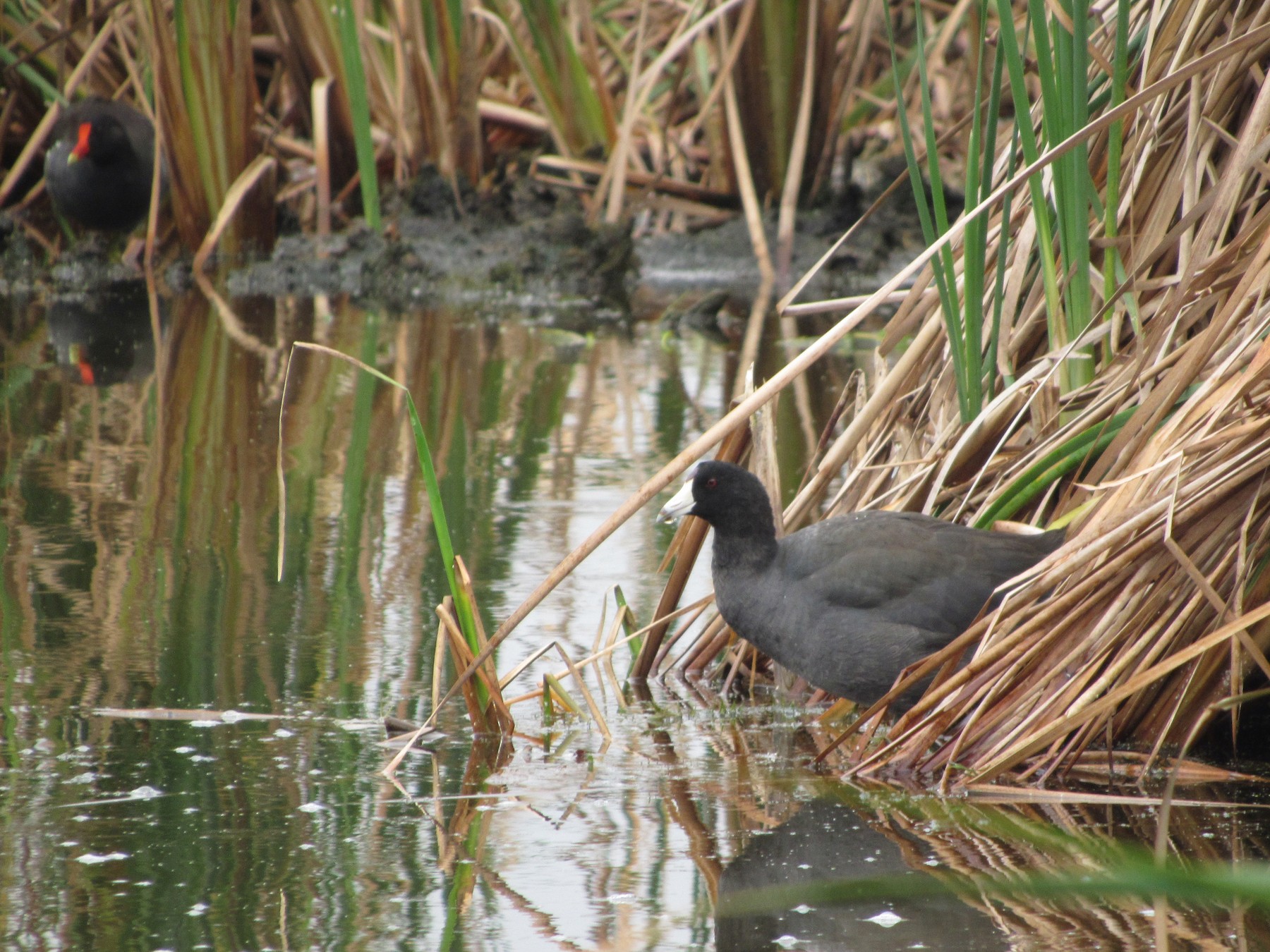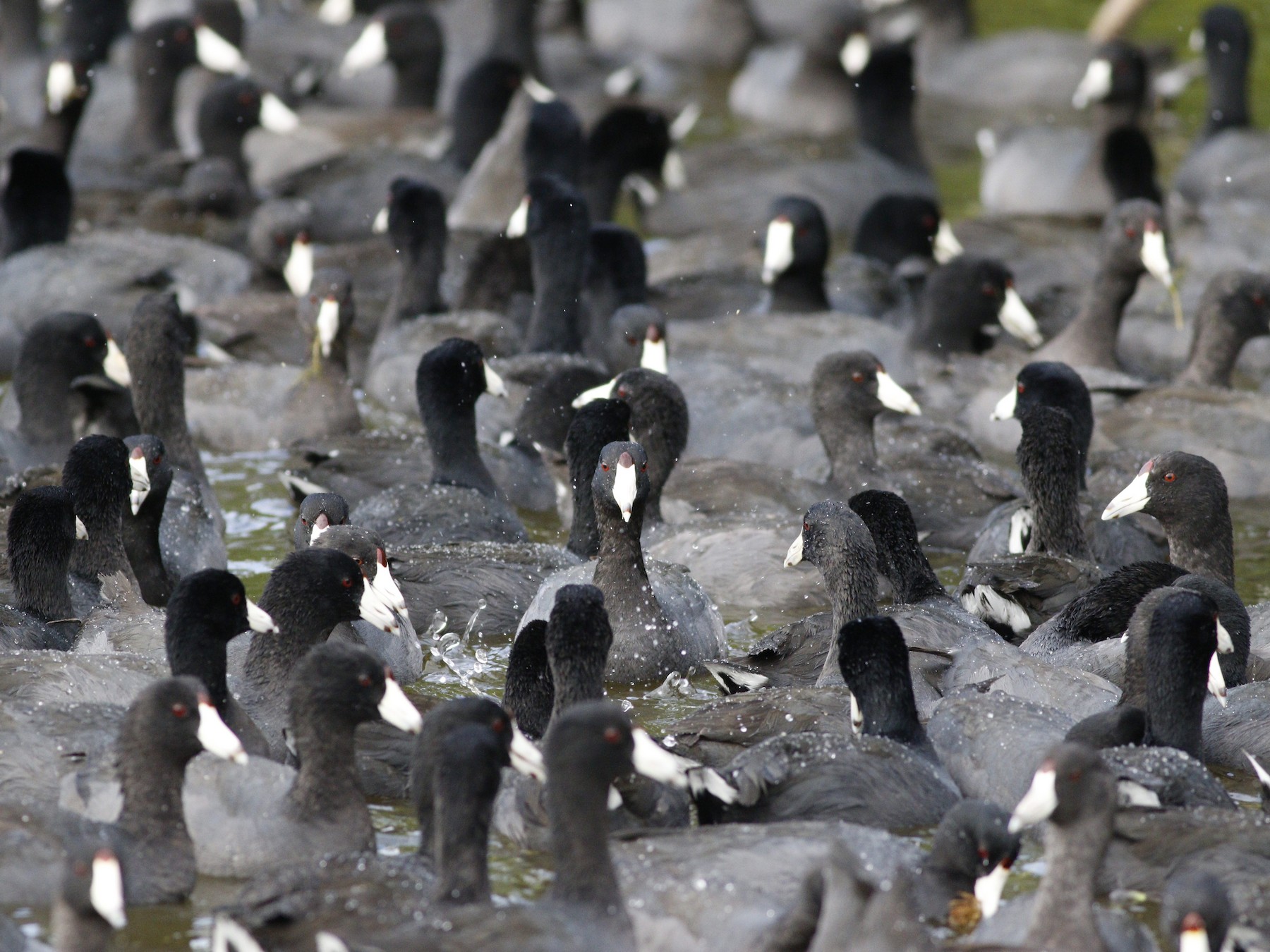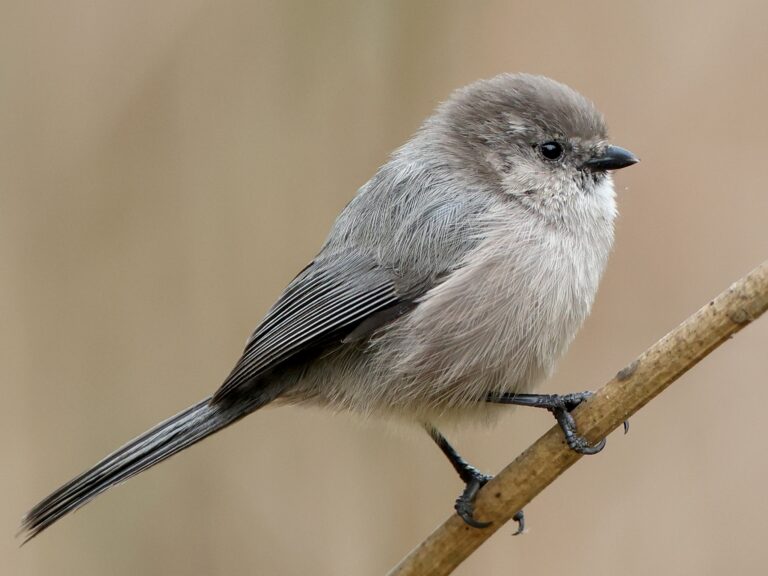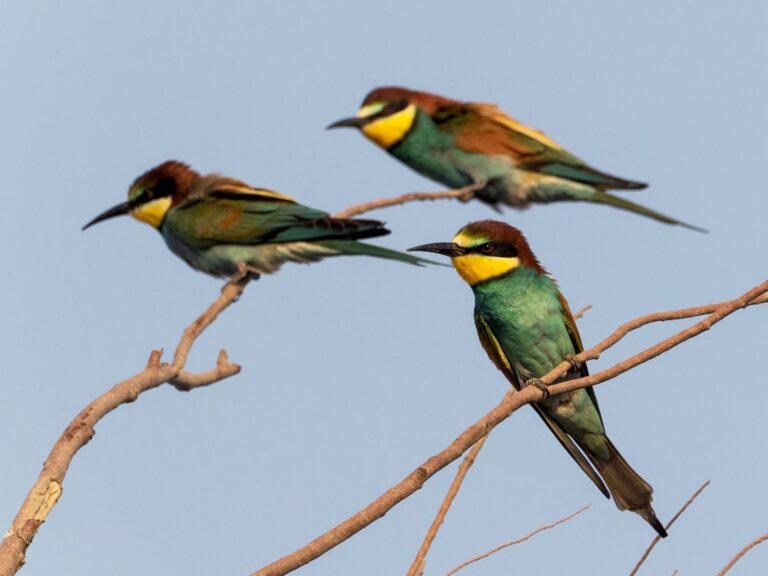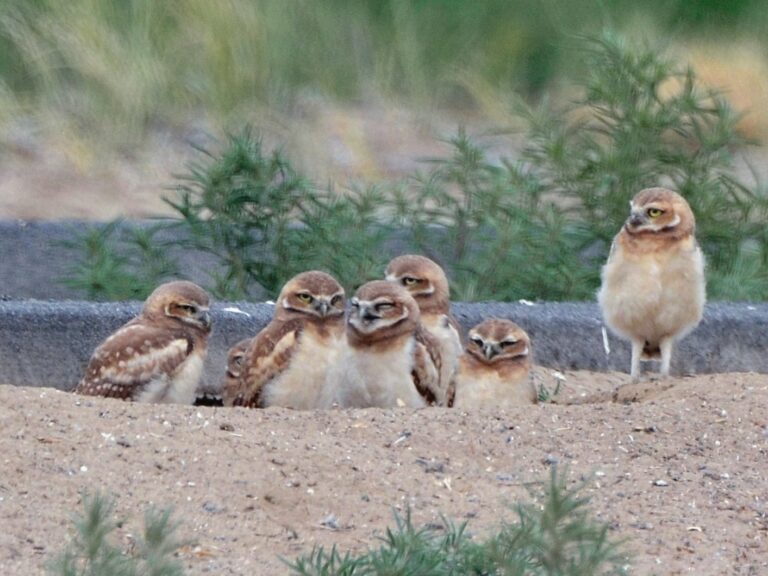American Coot: Behavior and Habitat Insights For This Unique Bird
The American Coot is a common water bird found across much of North and Central America. It is known for its dark body, white bill, and bright red eyes.
This bird is often mistaken for a duck but is actually part of the rail family and has unique behaviors and habitats that set it apart.
American Coots live in freshwater lakes, ponds, and marshes. They are strong swimmers but also spend a lot of time walking on land or floating on water.
These birds show interesting territorial behavior, especially during the breeding season. They may return to the same wintering grounds year after year.
Learn more about their habits and migration in this detailed look at the American Coot.
Key Takeways
- The American Coot is a distinct water bird often confused with ducks.
- It lives in freshwater habitats and returns to familiar places seasonally.
- Its unique behaviors include strong territorial instincts and varied calls.
Sign Up for Our Monthly Newsletter
Every month we send out our newsletter about interesting (and sometimes quirky) things happening in the world of birding. Give it a try!
Taxonomy and Classification
The American coot’s classification is based on its scientific name and its place within bird families. It shares traits with other rail species and fits into a specific order known for waterbirds with similar body shapes.
Certain distinct features set it apart within this group.
Scientific Naming and Authority
The American coot’s scientific name is Fulica americana. This name was given by Gmelin in 1789, marking its official description in the scientific community.
The genus Fulica includes other coots worldwide, but americana identifies this species as native to North America.
The Integrated Taxonomic Information System (ITIS) confirms Fulica americana as the accepted name, helping avoid confusion with related species. This standardized naming allows scientists and bird watchers to communicate clearly about the American coot.
Family Rallidae and Rail Related Species
The American coot belongs to the family Rallidae, commonly known as the rail family. This group includes small to medium-sized birds often found in wetlands and marshes.
Rails share traits like long toes and a strong, compact body which helps them move through dense vegetation. Within Rallidae, the American coot is closely related to other coots and rails that share similar habitats and behaviors.
This family is known for birds that are shy and often hidden. Coots are more visible due to their swimming habits and social nature.
Distinctive Features Within Gruiformes
The order Gruiformes includes the American coot along with cranes, rails, and similar birds. This group is defined by features like a strong bill and legs adapted for walking and swimming.
The American coot is distinct within Gruiformes for its short, sharp bill and frontal shield. Unlike many related rails, coots have lobed toes instead of webbed feet, helping them swim.
These physical traits help separate it from other members of the order.
For more detailed scientific classification, see Occurrence of the North American coot here.
Physical Characteristics
The American Coot has several distinct physical features that make it easy to identify. Its overall size, color, and specific details like its bill and eye color stand out.
There are also clear differences between adults and juveniles in appearance.
Size and Color
American Coots are medium-sized water birds. They typically measure about 15 to 17 inches in length, with a wingspan of around 26 to 31 inches.
Their body weight ranges between 1 to 2 pounds. Their feathers are mostly dark gray to black.
The belly and tail area may show some lighter shades of gray. Unlike ducks, their plumage is smooth and uniform without bold patterns.
Their legs are usually olive or grayish-green, which helps in swimming.
White Bill and Red Eye
One of the most noticeable features of the American Coot is its white bill. The bill is broad and slightly rounded at the tip.
It often has a faint dark ring near the end. The eye of the coot is striking red, providing a sharp contrast against its dark feathers.
This red eye is more visible in adults and helps to distinguish them from other similar water birds. Both the bill and eye colors play roles in species recognition and signaling during breeding.
Differences Between Adults and Juveniles
Adult American Coots have a fully white bill and bright red eyes. Their body feathers are darker and more consistent in color.
Juveniles, on the other hand, have duller colors. Their bills are usually a pale gray or brownish color instead of white.
Their eyes are dark and lack the vivid red tone of adults. Young coots also often show mottled brown or gray feathers, which help camouflage them from predators.
For detailed information on age and breeding-related differences, see the research on morphometric correlates of age and breeding status in American Coots.
Habitat and Geographic Range
The American Coot lives mostly near freshwater bodies. It chooses places with enough plants for food and cover.
Their range covers much of North America, from northern lakes down to southern states like Florida.
Preferred Freshwater Environments
American Coots favor calm freshwater areas such as lakes, ponds, marshes, and slow rivers. These places need dense emergent vegetation like cattails and bulrushes, which provide nesting sites and food.
They tend to avoid fast-moving water or salty environments. Water depth is important because nests are built on floating vegetation or just above water.
Changes in water level can force coots to move or adjust their nests. Grazing and burning near wetlands can affect the amount of suitable nesting plants, altering habitat quality.
Distribution in North America
The American Coot is found widely across the North American continent. It breeds in the northern and western United States and Canada during the warmer months.
In winter, many migrate south to avoid freezing conditions, moving into the southern US and Mexico. They are common on the plains where permanent wetlands exist.
In Colorado, for example, they use areas that provide enough open water and vegetation during breeding and migration. Their range shifts with seasons and water availability.
Notable Locations: Lakes and Florida
Lakes with stable water levels and rich vegetation are key habitats for American Coots. These locations support their nesting and feeding needs.
Florida is a significant wintering and resident area for American Coots. The warm climate and abundant freshwater habitats make it suitable year-round.
Coastal marshes, freshwater lakes, and ponds in Florida provide both shelter and food.
For more details on their distribution and habitat use, see research on American coot distribution in Colorado and habitat modeling.
Behavior and Life Cycle
The American Coot’s daily life revolves around finding food, defending territory, and raising young. Its breeding behavior is shaped by courtship, nest building, and caring for eggs and chicks.
These birds rely on aquatic plants for food and create nests that protect their broods from predators and weather.
Feeding Habits and Diet
American Coots primarily eat aquatic vegetation. They feed on roots, stems, seeds, and leaves of plants found in ponds and marshes.
They can dive underwater or pick plants while swimming on the surface. Besides plants, they also eat small animals like insects and snails, especially when feeding their young.
This varied diet helps them adjust to different environments. Feeding is often done in groups but they defend feeding areas when food is scarce.
Young coots learn to feed by watching and following their parents.
Breeding and Brood Patterns
Breeding happens during spring and summer when water and food are plentiful. Older and more experienced coots usually secure the best territories near good feeding spots.
Pairs are formed with strong bonds and jointly defend nesting areas. The number of broods per season varies, often just one or two depending on food supply and environmental conditions.
Chicks grow quickly after hatching, feeding mainly on small aquatic animals before switching to plants. Parents guard their broods closely against threats throughout the rearing period.
Courtship and Nest Building
Courtship involves a series of displays such as head dipping, calling, and following each other closely to form pairs. These behaviors strengthen pair bonds before nesting starts.
Nest building takes place in shallow water amid dense aquatic vegetation. Both partners gather plant material to create floating nests attached to submerged plants.
Nests provide camouflage and stability in wet environments. Their location near food sources allows parents to feed efficiently between bouts of guarding the eggs.
Egg Laying and Development
Females lay about 7 to 12 eggs per clutch. Egg colors range from pale olive to buff, often with brown spots helping them blend in with the nest surroundings.
Incubation lasts around three weeks, mostly shared by both parents. Eggs are kept warm and protected, frequently turned to ensure healthy development.
Once hatched, chicks are covered in down and are able to swim immediately. They remain in or near the nest while parents provide food and protection until they can fend for themselves.
More details on the breeding behavior of American Coots can be found in this study about their reproductive cycle in California. Information on their territorial behavior offers insight into their defense of nesting areas.
Migration and Seasonal Patterns
American Coots show clear travel habits during certain times of the year. Their movements align with environmental changes and often coincide with the migration of other water birds.
Spring Migrant Activity
In spring, American Coots begin moving north to breeding grounds. This migration is gradual, with some birds arriving earlier while others follow later.
They tend to stay in areas where open water remains. Coots wait for conditions to improve for nesting.
Some coots remain in winter areas, especially where water bodies don’t freeze. Most move toward northern lakes in states like Colorado and regions in Canada.
Studies show that coots often migrate alone. They can be seen in groups once they reach their spring habitats.
Migrating coots spend more time feeding before and after the journey. Their pattern is similar to other waterfowl like Canada geese, though coots have their own timing and routes.
More details on their spring migration can be found in research on American coot distribution and migration in Colorado.
Migration Timing: April and November
April is a key month for American Coots moving north. Many start their journey after winter conditions ease.
The timing varies based on local weather and water availability. Migration often peaks in mid- to late April.
In autumn, November plays a similar role for southward migration. Coots leave their breeding sites and travel to warmer areas.
This timing aligns with the arrival of harsher weather and the freezing of northern waters. Both spring and autumn migrations often coincide with hunting seasons in some states, especially where harvests of coots are common.
This overlap of migration and human activity is important for wildlife management. More on the timing patterns is covered in studies like the chronology of migration by American Coots in Oklahoma.
Travel and Association with Other Species
American Coots travel mostly by flying low over water and land. They are strong swimmers but depend on flight for long distances during migration.
While migrating, coots often travel near or with other species like Canada geese. This association can help coots find good feeding grounds and resting spots.
Coots are not usually part of large mixed-species flocks. Once they reach their destination, coots stay within freshwater areas where they can feed and nest safely.
Their territorial behavior during breeding season means they spread out once they settle. More on their behavior during such times is discussed in studies on territorial behavior of the American Coot.
Frequently Asked Questions
The American Coot has some unique traits related to its appearance, behavior, and habitat. Its calls vary as it grows, and it moves seasonally between different areas.
The bird’s feet develop at a specific time, and it is capable of flight to some degree.
What distinguishes a male American Coot from a female?
Male and female American Coots look very similar. They have the same dark feathers and white bill.
Males tend to be slightly larger, but it is hard to tell them apart by appearance alone.
What does the American Coot’s call sound like?
The American Coot has several call types. Their sounds include sharp, repetitive notes and softer cooing sounds.
Young coots develop calls that become like adults by about three months old, as seen in studies of their vocal development.
What is the geographic range and habitat of the American Coot?
American Coots live across much of North America. They prefer freshwater wetlands such as marshes and ponds.
They are well adapted to life in these watery environments.
How do American Coots migrate seasonally?
Some American Coots remain in their home areas during winter. Others move south to warmer regions.
They show strong instincts to return to familiar wintering grounds, indicating site attachment during migration.
At what stage does the American Coot develop its distinctive feet?
Coots develop their lobed feet early after hatching. These feet help them swim well in marshes and lakes.
The foot structure becomes fully functional as the young grow.
Can American Coots fly, and if so, how well?
American Coots can fly, but they are not strong fliers like ducks.
They usually fly short distances and prefer swimming or walking in their habitat.
Flight helps them move between wetlands during migration.
Behavior of breeding American Coots offers details on their adaptation to marshes and movement.


